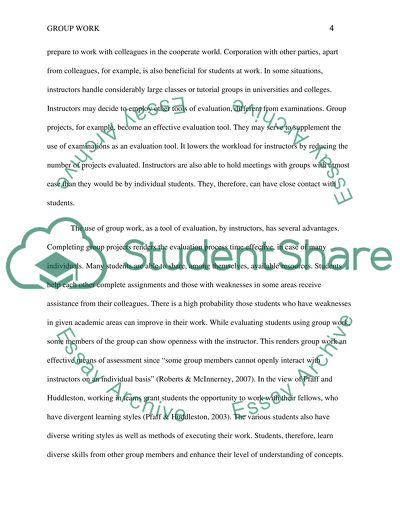Cite this document
(“Group work is frequently used as part of the assessment process in Essay”, n.d.)
Retrieved from https://studentshare.org/english/1601676-group-work-is-frequently-used-as-part-of-the-assessment-process-in-university-or-college-courses-while-it-is-generally-seen-to-have-many-benefits-from-an-instructors-point-of-view-students-may-find-it-problematic-discuss
Retrieved from https://studentshare.org/english/1601676-group-work-is-frequently-used-as-part-of-the-assessment-process-in-university-or-college-courses-while-it-is-generally-seen-to-have-many-benefits-from-an-instructors-point-of-view-students-may-find-it-problematic-discuss
(Group Work Is Frequently Used As Part of the Assessment Process in Essay)
https://studentshare.org/english/1601676-group-work-is-frequently-used-as-part-of-the-assessment-process-in-university-or-college-courses-while-it-is-generally-seen-to-have-many-benefits-from-an-instructors-point-of-view-students-may-find-it-problematic-discuss.
https://studentshare.org/english/1601676-group-work-is-frequently-used-as-part-of-the-assessment-process-in-university-or-college-courses-while-it-is-generally-seen-to-have-many-benefits-from-an-instructors-point-of-view-students-may-find-it-problematic-discuss.
“Group Work Is Frequently Used As Part of the Assessment Process in Essay”, n.d. https://studentshare.org/english/1601676-group-work-is-frequently-used-as-part-of-the-assessment-process-in-university-or-college-courses-while-it-is-generally-seen-to-have-many-benefits-from-an-instructors-point-of-view-students-may-find-it-problematic-discuss.


